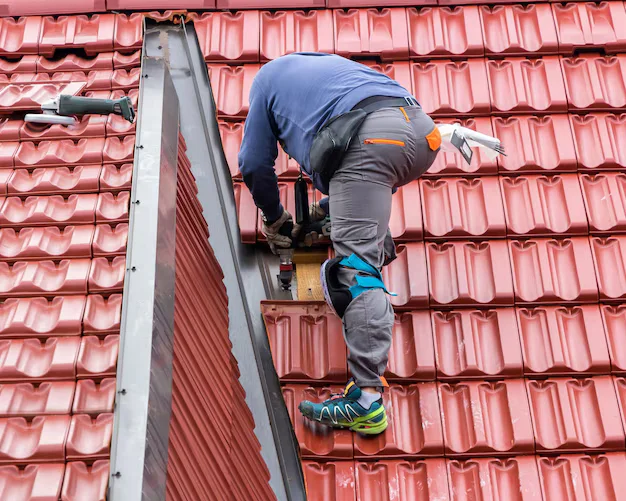Physical Address
304 North Cardinal St.
Dorchester Center, MA 02124
Physical Address
304 North Cardinal St.
Dorchester Center, MA 02124

Your roof is more than just the ceiling over your head; it serves as the first line of defense against the elements, ensuring the safety, comfort, and longevity of your home. A well-maintained roof not only enhances curb appeal but also prevents costly repairs caused by unchecked damage. Ignoring roof issues can lead to severe consequences, including structural damage, mold growth, and increased energy costs. This comprehensive guide aims to educate homeowners on recognizing, preventing, and addressing the most common roof problems, ultimately helping you extend the lifespan of your roof and maintain a safe living environment.
One of the most prevalent and damaging roof issues is water intrusion, which can lead to extensive interior damage if not promptly addressed. Leaks often originate from damaged shingles or faulty flashing, both critical components of waterproofing your roof.
If left unaddressed, leaks can compromise the structural integrity of your home, cause wood rot, encourage mold growth, and lead to costly repairs. Prompt detection and repair are vital.
Shingles are your roof’s first line of defense. When they become missing or damaged, your roof’s ability to stay waterproof diminishes considerably.
Ignoring damaged shingles risks allowing water to penetrate deeper, leading to leaks, mold, and further roof deterioration.
Flashing is critical in sealing joints and vulnerable areas such as chimneys, vents, and skylights.
Flashings directs water away from seams and penetrations, preventing leaks. Proper installation and maintenance are essential for ongoing waterproofing.
Faulty flashing can allow water infiltration, leading to leaks, mold growth, and structural damage.
Sagging indicates serious underlying problems that threaten the structural integrity of your roof.
If ignored, sagging can lead to catastrophic roof failure, risking damage to the entire home.
Proper ventilation helps regulate temperature and moisture levels in your attic, prolonging the lifespan of your roof.
Good ventilation prevents heat buildup in summer and ice dams in winter, which can damage roofing materials.
Poor ventilation accelerates roof deterioration, causes energy inefficiency, and fosters mold growth.
Extreme weather conditions are a primary culprit in roof issues. Storms, hail, and high winds can physically damage the roof surface, while UV radiation can accelerate material degradation.
Failing to regularly inspect and clean your roof leads to unnoticed damage compounds over time, making minor issues into major repairs.
Most roofing materials have a lifespan, after which deterioration becomes inevitable. Recognizing early signs of aging versus actual damage can save money and prevent surprises.
Using substandard materials or hiring inexperienced contractors can dramatically reduce roof durability and cause premature roof issues.
Regular visual checks are your first line of defense.
Hire certified inspectors periodically, ideally twice a year, especially after severe weather events. They use advanced tools such as infrared cameras to detect hidden moisture and drones for detailed visual assessments.
Keep records of weather events and inspect your roof afterward for damage. Early detection often prevents larger issues and costly repairs.
Small leaks can sometimes be temporarily fixed with patching, but persistent leaks require replacing damaged shingles or flashing.
Remove moss, algae, and debris to prevent water pooling and damage. Use gentle cleaning solutions and avoid damaging roofing materials.
Ensure that vents are properly sealed, unobstructed, and functioning to promote airflow, reducing moisture buildup and temperature extremes.
Most signs indicating the need for full replacement include extensive shingle damage, persistent leaks, or when the roof exceeds its expected lifespan. Cost considerations should also factor into this decision, and consulting with a licensed contractor is recommended for accurate assessment.
| Preventative Measure | Description | Benefit |
|---|---|---|
| Regular Inspections | Conduct biannual or annual checks | Early detection of issues, prolongs roof lifespan |
| Gutter Maintenance | Clean gutters regularly to prevent water backup | Reduces risk of water infiltration and debris buildup |
| Trimming Overhanging Branches | Cut back tree limbs close to the roof | Prevents physical damage from falling branches |
| Proper Attic Insulation & Ventilation | Ensure adequate insulation and airflow | Reduces moisture buildup and thermal stress |
| Prompt Minor Repairs | Fix small problems as they arise | Prevents escalation into major issues |
While some minor maintenance can be handled DIY, there are clear signs that require expert intervention:
Choosing a reputable roofing contractor is crucial. Look for licensed professionals with positive reviews and warranties on their work. For more guidance, visit National Roofing Contractors Association.
Understanding and promptly addressing roof issues can save you thousands in repairs and protect your home. Regular inspections, vigilant monitoring after storms, and timely repairs are essential. Preventive measures—like gutter cleaning, trimming trees, and proper attic ventilation—extend your roof’s lifespan and keep your home safe and dry.
For a detailed checklist on roof inspections, visit Roof Inspection Checklist. When selecting a roofing contractor, ensure they are licensed, insured, and have good reviews. For DIY repairs, consult trusted sources like the Home Depot DIY Guide.